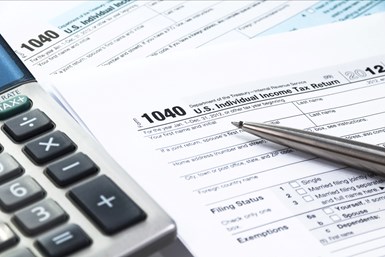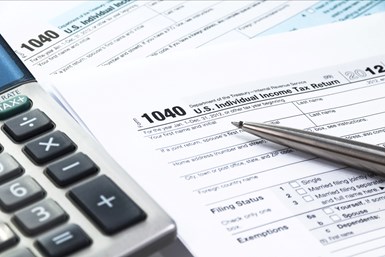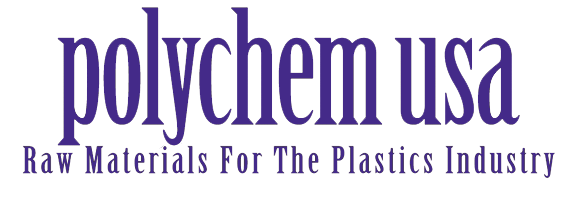
R&D Tax Credit Opportunities for Plastics Processors

This has been a hectic time for plastics processors, many of which have ramped up production and development efforts to bring new products to the market, some related to the ongoing pandemic.
The great news is that all the time and expenses these processors spent to meet the new demand and expand plastics’ applicability can qualify for the research and development (R&D) tax credit, saving companies millions of dollars so they can reinvest in further growth.
What is the R&D tax credit?
Enacted in 1981, the R&D tax credit incentivizes U.S. businesses to keep investing in new ideas, processes and technology so they can thrive in their industry. To this date, it remains one of the most lucrative tax incentives that the U.S. government offers, allowing companies of all sizes to recover up to 10% of their qualified R&D expenses.
Because of the recent favorable changes in the tax code, the R&D tax credit has become even more widely accessible to domestic businesses in various industries.
- The “Discovery Rule” was eliminated: Since 2014, companies no longer need to produce anything “new to the world” to be eligible for the credit. Any improvement or enhancement that is “new to the taxpayer” now qualifies as R&D.
- The R&D tax credit became permanent: The credit is now included as a permanent fixture of the tax code under the PATH Act of 2015, making it easier for businesses to incorporate it within their tax planning and financial strategies every year.
- The payroll tax credit was introduced: The enhancement of the PATH Act in 2016 allowed new or small businesses to utilize the R&D tax credit to offset future payroll taxes for up to five years.
In addition to the federal R&D tax credit, approximately 39 states also provide their own version of the R&D credit, some of which can return up to 12% of state expenses back to taxpayers. If qualified, a company can claim both federal and state-level credits for its innovation efforts.
For example, if your company spent $500,000 last year on new product development, you could expect to save approximately $50,000, or about 10%, on your federal income taxes. What’s more, if you have never claimed the R&D credit, you could expect a similar 10% refund of taxes that you overpaid in each of your previous three tax years.
What Types of Activities Qualify?
The R&D tax credit eligibility is much broader than many companies realize. Any activities and expenditures incurred during qualified projects, or “business components”—such as developing or improving a product, process, software, technique, formula, or invention—can qualify for the credit.
With that being said, each project must meet the following four‐part test in order for activities and associate expenses to qualify.
- Permitted Purpose: The research must impart new or improved functionality, performance, reliability, or quality to a product, process, formulation, invention, software, or technique.
- Elimination of Uncertainty: From the outset of the project, the development team must encounter technical uncertainty regarding the appropriate design, methodology, or capability to achieve project specifications.
- Process of Experimentation: The activities constitute a process of experimentation with the intent to resolve the technical uncertainty through the systematic evaluation of alternate solutions.
- Technological in Nature: The activity undertaken relies on the principles of “hard” sciences including physics, biology, engineering, chemistry, or computer science.
Examples of activities and projects in the plastics industry that are most likely to contain qualified research:
- Plastic materials:
- Testing of resin and polymer/cement compositions for specific applications;
- Improving the resistance of polymeric products against environmental impacts, including temperature, pressure, chemicals & solvents, or ultraviolet radiation;
- Developing or improving polymer-specific manufacturing processes, including catalysts and intermediate conversions used in pilot plants.
- Plastic Processing Equipment
- Engineering processes for the production of new resins and bimodal plastics;
- Implementing online production testing capabilities and feedback control systems;
- Using AI and machine learning for automation.
- Molding/Moldmaking
- Designing and developing new or improved molds, tooling, and fixtures;
- Integrating automated systems, 3D printing techniques, or the use of machine learning;
- Improving the software programming to identify optimal process variables.
- Extrusion
- Evaluating new/improved processes using 3D melt flow simulation software;
- Engineering new dies, tooling, and fixtures used in novel processes;
- Improving efficiency, energy consumption, and reducing the noise of machinery.
- Recycling
- Developing new applications for waste plastics;
- Experimenting with greener eco-friendly materials;
- Bioengineering bacteria or other natural compounds to improve efficiencies.
Keep in mind that the outcome of the research activities doesn’t have to be successful. Even if the projects or processes are never introduced to the market, the time and effort spent can still qualify for the R&D tax credit.
What Kind of Expenses Would Qualify?
According to IRS Section 41(b), qualified expenses are the expenditures a company incurs conducting research activities on qualified projects. These expenses fall within the following four categories:
- Employee Wages: Wages subject to withholding (W2 Box-1) paid to employees directly engaged in qualified activities, and those employees directly supervising and supporting R&D staff. Qualified employees can be performing R&D activities throughout your organization, from entry-level staff to C-Suite leadership. Certain self-employment income from partnerships, LLCs, and sole proprietorships also meet the definition of wages.
- Supply Costs: Supplies and raw materials used or consumed during the research and development process can be included towards the credit, including building prototypes, pilot models, and molds/dies.
- Contract Research: Payments made to a third-party contractor, subcontractor, or services vendor based in the U.S. to perform qualified research activities or testing on behalf of the taxpayer or business can be included towards the R&D tax credit.
- Computer Leasing/Rental: Amounts paid for cloud computing services associated with the development of a technology or software can be qualified R&D expenses.
In the processing space, here are some real-world examples of qualifying expenses:
- The pilot plant operation expenses and costs of raw materials used for testing feedstocks and formulation or verifying physical properties;
- The wages of engineers and technicians that evaluate product quality and performance; and
- The research cost of material analyses and rheological measurements performed by third parties
How Can You Claim the R&D Tax Credit?
Proper financial and project-related documentation is very important to meet the standards outlined by the IRS. The necessary documentation includes but is not limited to:
- Tax returns & financial statements
- Employee payroll & expense reports
- Project lists, designs, and testing reports
- Contracts with customers and vendors
- Supporting documentation, such as employee timesheets or WIP reports
After collecting the proper documentation needed to calculate the credit, you need to include form 6765 with your annual federal income tax return to claim the R&D tax credit. Although the IRS provides the instructions for companies to file this form, business owners will likely face confusion, as the R&D tax credit is one of the most complex sections of the tax code and comprehensive studies must be performed by an expert.
One thing to note is that most CPAs don’t necessarily specialize in claiming the R&D tax credit. With this particular tax credit making up such a small portion of the U.S. tax code, most CPAs are unaware of the credit or unsure what qualifies. Even if they are aware of the credit, they might not be actively seeking opportunities for you. So, it’s wise to start communicating with your CPA to make sure you incorporate the R&D tax credits into your annual tax planning.
About the Author: Casey S. Barka is cofounder & director of R&D Engagements at Strike Tax Advisory, which specializes in claiming R&D tax credits to help businesses of all sizes reduce their tax liability so they can reinvest in their innovations. He is an R&D tax credit expert with 20 years of industry knowledge and eight years of proven experience calculating R&D tax credits for major accounting and financial services firms. Prior to co-founding Strike, Barka spent eight years in the petrochemicals industry in Houston. His distinguished knowledge in dynamic properties of polyethylene (PE), polypropylene (PP), and styrene-butadiene co-polymer (SBC) resins drove significant departmental improvements. Contact: striketax.com; casey.barka@striketax.com.

Leave a Reply